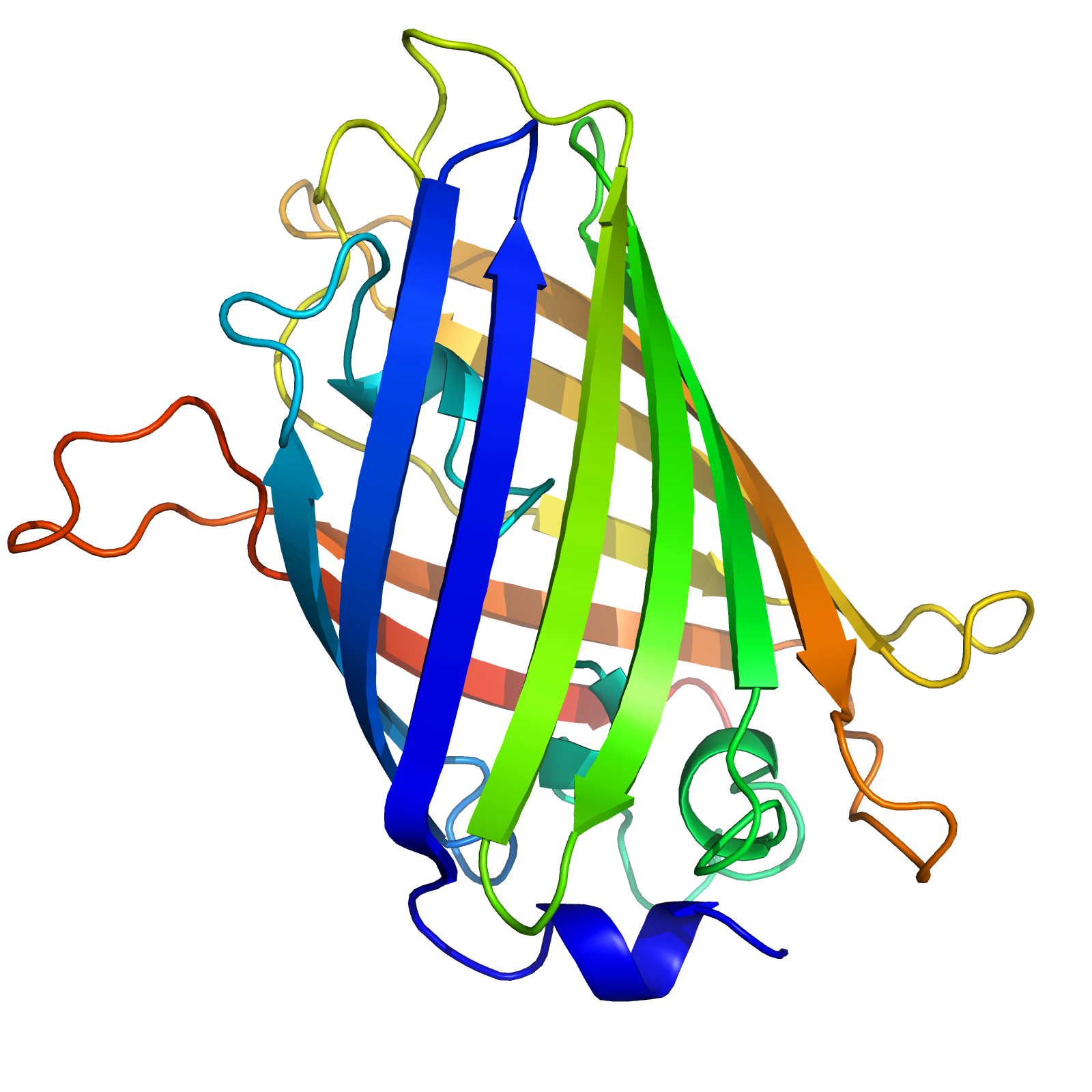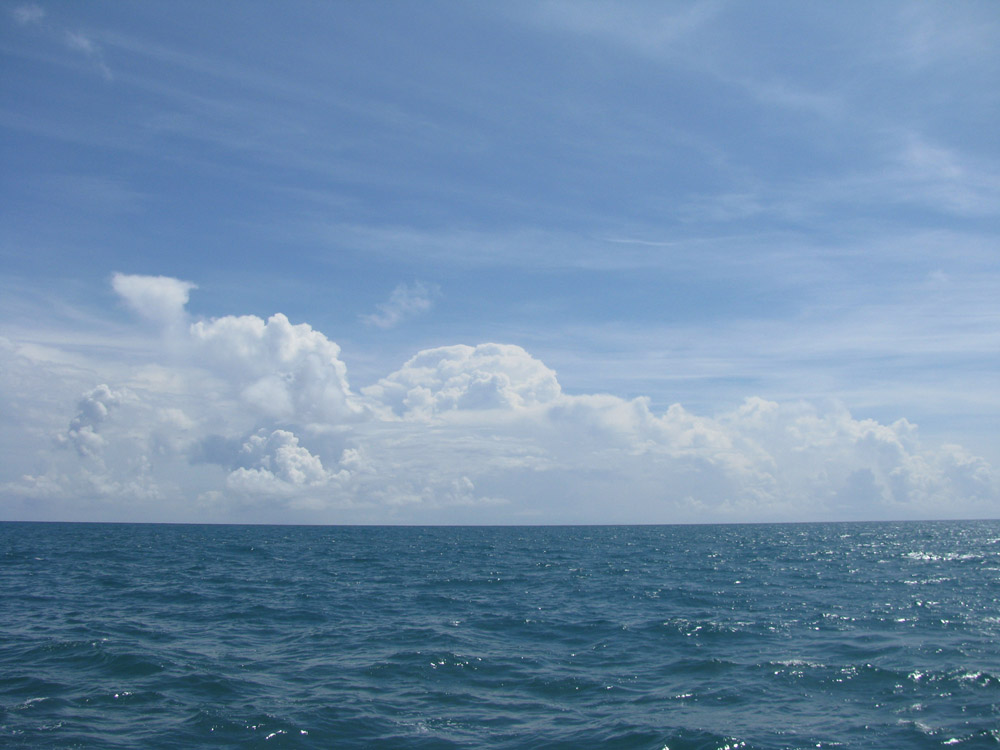Interesting Facts
The Aequorea victoria jellyfish is part of a unique sect of
marine organisms because it is a bioluminescent organism (for
another example of a bioluminescent organism click
here). The
specific reason for the bioluminescence of Aequorea victoria is
not fully known, but it only seems to display this trait when
disturbed by being touched (Mills, 2008). The first
scientist that began to study the bioluminescent properties of
Aequorea victoria with the intent of being able to copy and
recreate them was Dr. Osamu Shimomura. He began to study the
jellyfish at the University of Washington Friday Harbors
Laboratory in the summer of 1961. He would extract samples of
luminescent liquid called squeezate and analyze its properties
(GFP History, 2013). He became the first scientist to discover
the components of what is now known as the green fluorescent
protein (GFP) and Aequorin (Kendall & Badminton, 1998).
 Although
Dr. Osamu Shimomura helped isolate GFP, thorough research with
modern technology has made it possible for us to not only
explain in depth how bioluminescence (and even fluorescence)
works, but also use it in biomedical processes that range from
gene transcription to protein analysis. The discovery of GFP led
to Dr. Osamu receiving the Nobel Prize in chemistry in 2008.
Bioluminescence is caused by reactions within three major
components; a luciferin, luciferase, and molecular oxygen. The
luciferase is an enzyme that acts like a catalyst for the
oxidation reaction with luciferin, which then produces an
unstable electron excited intermediate (Kendall & Badminton,
1998). The intermediate almost immediately loses this excited
state and returns to a more stable form by losing the electron
known as oxyluciferin (because it has been oxidized). As it
loses the electron when it shifts from an unstable to stable
state, light is emitted thus producing the bioluminescent effect
(Kendall & Badminton, 1998). This reaction only produces light
once and is the basic reaction for bioluminescence (Click here
for an animated image of the interaction between GFP and
Aequorin
Green Fluorescent Protein - The GFP Site.mov). The
bioluminescence of the Aequorea victoria jellyfish differs
though because it uses a photoprotein, which acts much like
luciferase but are different in the aspect that photoproteins
are already stabilized oxygenated intermediates of the chemicals
luciferin and luciferase (Kendall & Badminton, 1998). This
photoprotein is known as aquorin. This chemical contains
luciferin with an oxygen attached and when mixed with calcium
ions, undergoes an oxidation reaction (Kendall & Badminton, 1998). This
reaction produces a blue light and is referred to as the blue
fluorescent protein (BFP). BFP is in an excited state and
quickly undergoes a radiationless transfer of energy into GFP
which then emits a green light as it returns to a stable state.
One thing to note is that bioluminescence is not the same as
fluorescence. Organisms that use fluorescence receive energy
from electromagnetic wavelengths (Kendall & Badminton, 1998). This allows for a short half life followed by
decay into a more stable state. Light is emitted during this
transition to a more stable state and if energy is continuously
provided, it will continue to glow. Other marine species that
are capable of producing bioluminescent light use it for a
variety of reasons (click
here to see other organisms that have the GFP gene). Most marine organisms use bioluminescence as
a defense against predators. Jellyfish that float at the surface
use it to trick predators that hunt from below into thinking
that it is sunlight, since they look for shadows created by
creatures (Bioluminescence, 2013). Some species of squid use
bioluminescence to confuse predators and prey. There are many uses for bioluminescence that
marine organisms use it for and perhaps with more research, scientists can
discover what else the Aequorea victoria jellyfish use it for.
Although
Dr. Osamu Shimomura helped isolate GFP, thorough research with
modern technology has made it possible for us to not only
explain in depth how bioluminescence (and even fluorescence)
works, but also use it in biomedical processes that range from
gene transcription to protein analysis. The discovery of GFP led
to Dr. Osamu receiving the Nobel Prize in chemistry in 2008.
Bioluminescence is caused by reactions within three major
components; a luciferin, luciferase, and molecular oxygen. The
luciferase is an enzyme that acts like a catalyst for the
oxidation reaction with luciferin, which then produces an
unstable electron excited intermediate (Kendall & Badminton,
1998). The intermediate almost immediately loses this excited
state and returns to a more stable form by losing the electron
known as oxyluciferin (because it has been oxidized). As it
loses the electron when it shifts from an unstable to stable
state, light is emitted thus producing the bioluminescent effect
(Kendall & Badminton, 1998). This reaction only produces light
once and is the basic reaction for bioluminescence (Click here
for an animated image of the interaction between GFP and
Aequorin
Green Fluorescent Protein - The GFP Site.mov). The
bioluminescence of the Aequorea victoria jellyfish differs
though because it uses a photoprotein, which acts much like
luciferase but are different in the aspect that photoproteins
are already stabilized oxygenated intermediates of the chemicals
luciferin and luciferase (Kendall & Badminton, 1998). This
photoprotein is known as aquorin. This chemical contains
luciferin with an oxygen attached and when mixed with calcium
ions, undergoes an oxidation reaction (Kendall & Badminton, 1998). This
reaction produces a blue light and is referred to as the blue
fluorescent protein (BFP). BFP is in an excited state and
quickly undergoes a radiationless transfer of energy into GFP
which then emits a green light as it returns to a stable state.
One thing to note is that bioluminescence is not the same as
fluorescence. Organisms that use fluorescence receive energy
from electromagnetic wavelengths (Kendall & Badminton, 1998). This allows for a short half life followed by
decay into a more stable state. Light is emitted during this
transition to a more stable state and if energy is continuously
provided, it will continue to glow. Other marine species that
are capable of producing bioluminescent light use it for a
variety of reasons (click
here to see other organisms that have the GFP gene). Most marine organisms use bioluminescence as
a defense against predators. Jellyfish that float at the surface
use it to trick predators that hunt from below into thinking
that it is sunlight, since they look for shadows created by
creatures (Bioluminescence, 2013). Some species of squid use
bioluminescence to confuse predators and prey. There are many uses for bioluminescence that
marine organisms use it for and perhaps with more research, scientists can
discover what else the Aequorea victoria jellyfish use it for.
